Abstract
The relation between citric acid cough threshold and airway hyperresponsiveness was investigated in 11 non-smoking patients with allergic asthma (mean FEV1 94% predicted) and 25 non-atopic smokers with chronic airflow obstruction (mean FEV1 65% predicted). Cough threshold was determined on two occasions by administering doubling concentrations of citric acid. Seven of the 11 asthmatic subjects and 14 of 25 smokers with chronic airflow obstruction had a positive cough threshold on both test days. Cough threshold measurements were reproducible in both groups (standard deviation of duplicate measurements 1.2 doubling concentrations in asthma, 1.1 doubling concentrations in chronic airflow obstruction). Citric acid provocation did not cause bronchial obstruction in most patients, though four patients had a fall in FEV1 of more than 20% for a short time on one occasion only. No significant difference in cough threshold was found between the two patient groups despite differences in baseline FEV1 values. There was no significant correlation between cough threshold and the provocative concentration of histamine causing a 20% fall in FEV1 (PC20) histamine in either group. Thus sensory nerves can be activated with a tussive agent in patients with asthma and chronic airflow obstruction without causing bronchial smooth muscle contraction.
Full text
PDF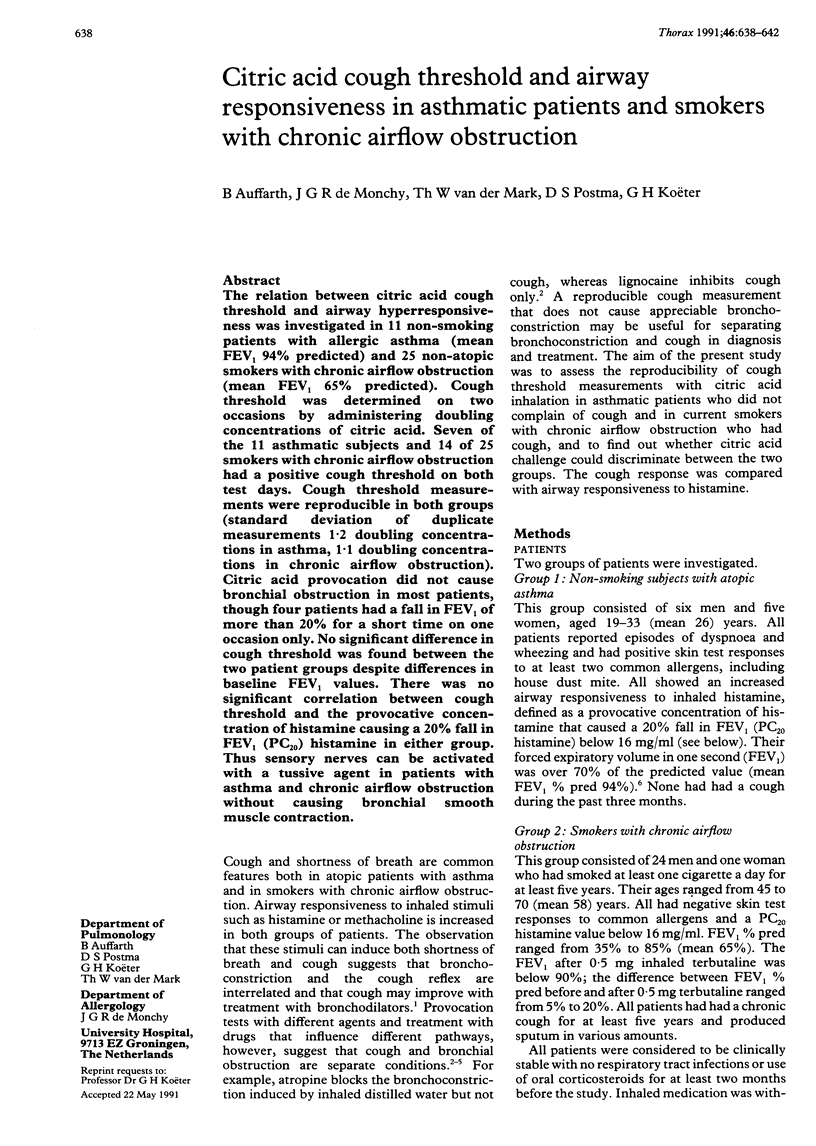
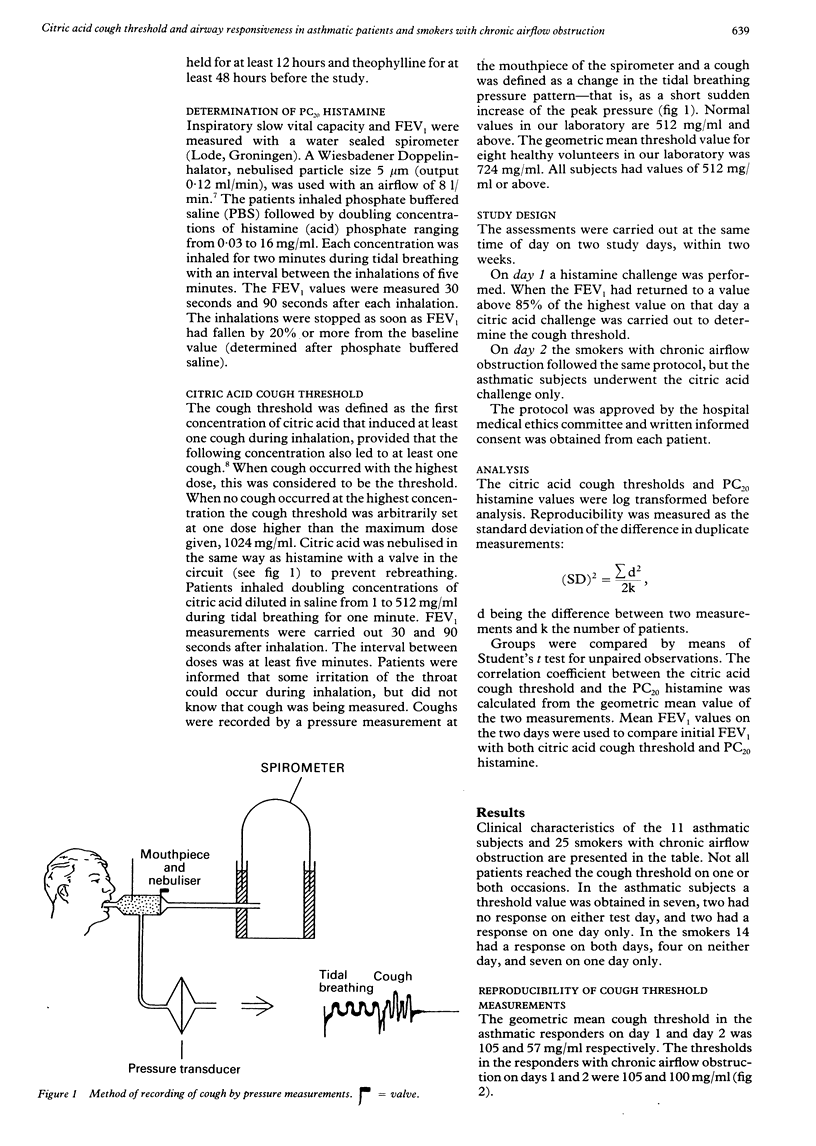
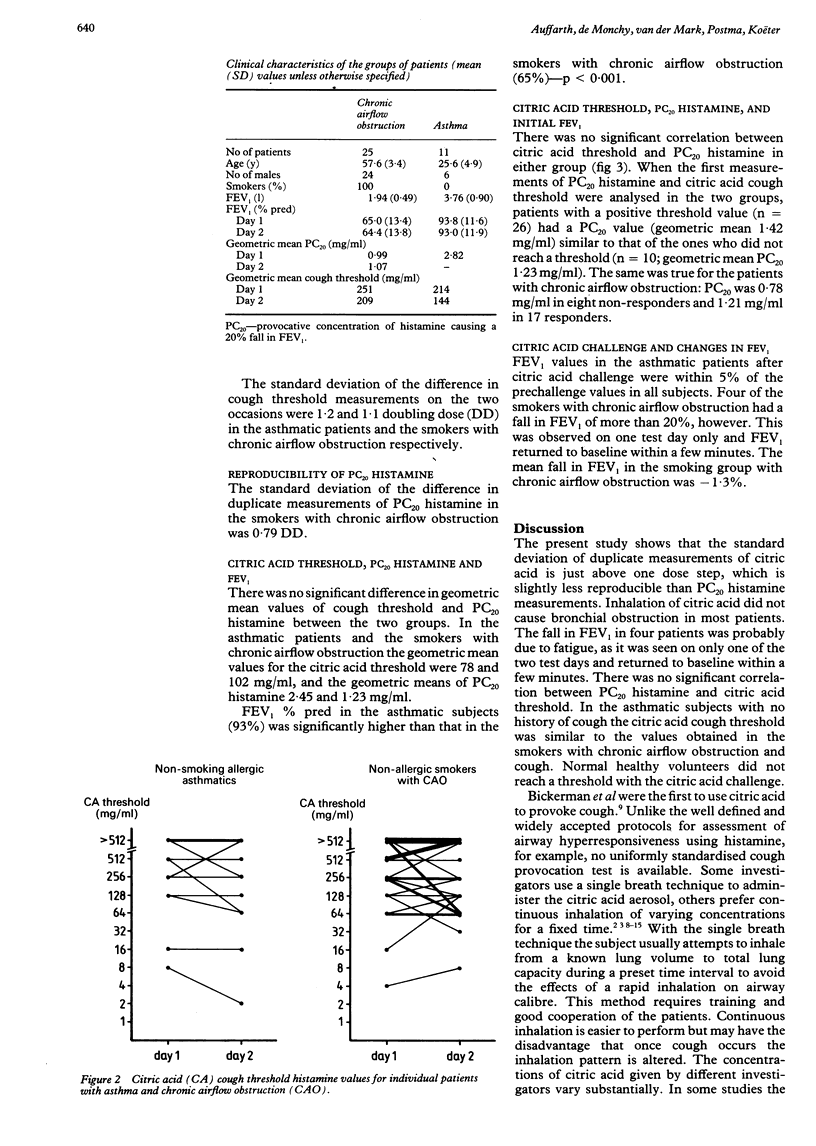
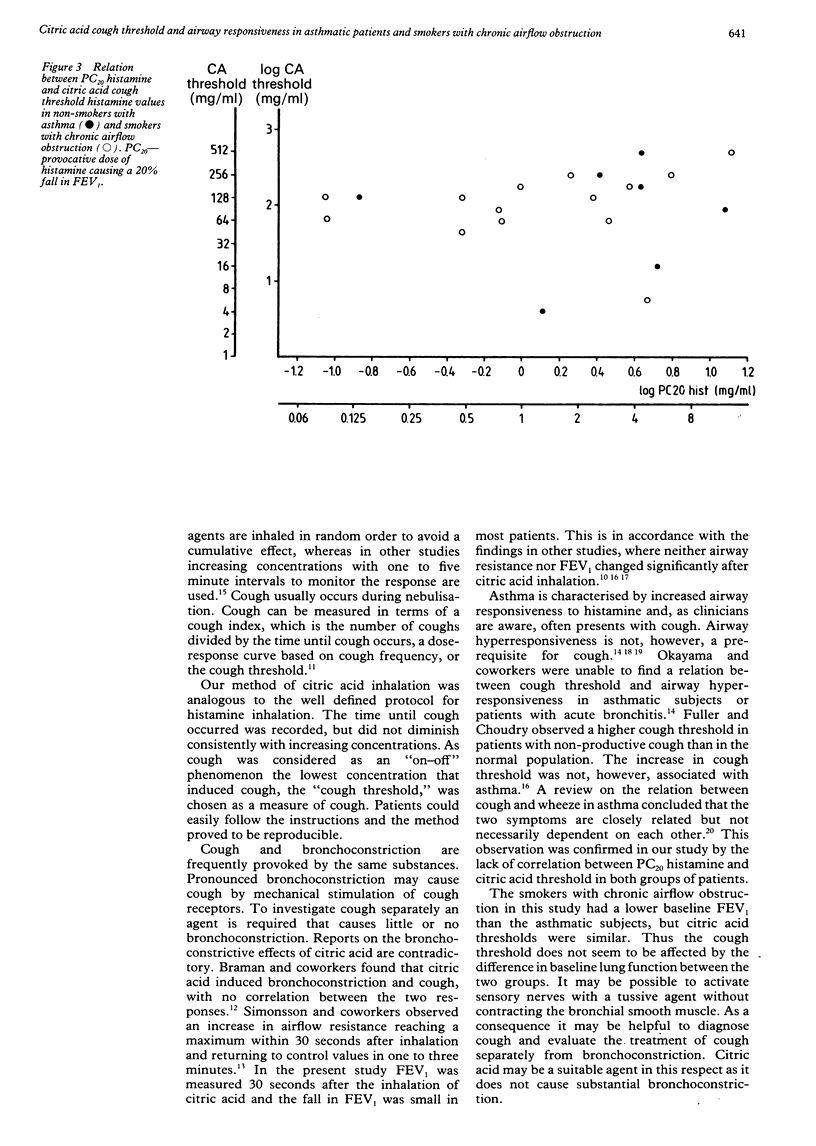
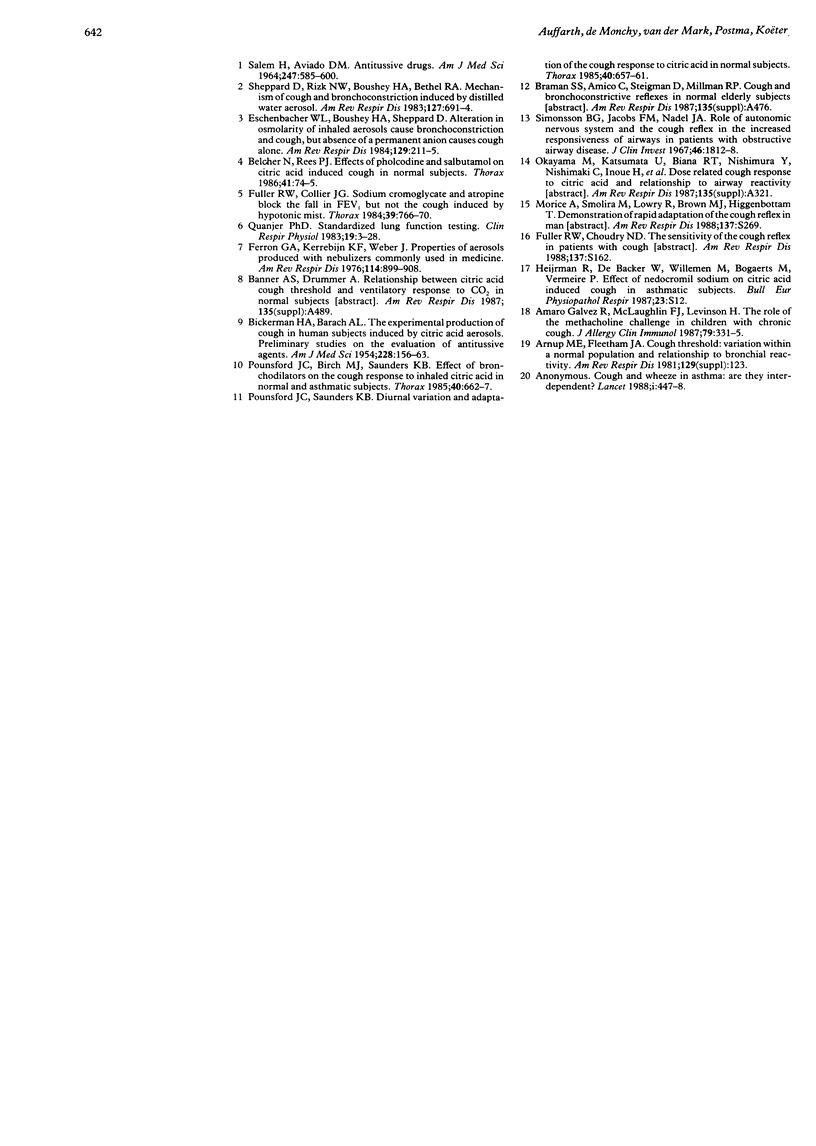
Selected References
These references are in PubMed. This may not be the complete list of references from this article.
- BICKERMAN H. A., BARACH A. L. The experimental production of cough in human subjects induced by citric acid aerosols; preliminary studies on the evaluation of antitussive agents. Am J Med Sci. 1954 Aug;228(2):156–163. doi: 10.1097/00000441-195408000-00005. [DOI] [PubMed] [Google Scholar]
- Belcher N., Rees P. J. Effects of pholcodine and salbutamol on citric acid induced cough in normal subjects. Thorax. 1986 Jan;41(1):74–75. doi: 10.1136/thx.41.1.74. [DOI] [PMC free article] [PubMed] [Google Scholar]
- Eschenbacher W. L., Boushey H. A., Sheppard D. Alteration in osmolarity of inhaled aerosols cause bronchoconstriction and cough, but absence of a permeant anion causes cough alone. Am Rev Respir Dis. 1984 Feb;129(2):211–215. [PubMed] [Google Scholar]
- Ferron G. A., Kerrebijn K. F., Weber J. Properties of aerosols produced with three nebulizers. Am Rev Respir Dis. 1976 Nov;114(5):899–908. doi: 10.1164/arrd.1976.114.5.899. [DOI] [PubMed] [Google Scholar]
- Fuller R. W., Collier J. G. Sodium cromoglycate and atropine block the fall in FEV1 but not the cough induced by hypotonic mist. Thorax. 1984 Oct;39(10):766–770. doi: 10.1136/thx.39.10.766. [DOI] [PMC free article] [PubMed] [Google Scholar]
- Galvez R. A., McLaughlin F. J., Levison H. The role of the methacholine challenge in children with chronic cough. J Allergy Clin Immunol. 1987 Feb;79(2):331–335. doi: 10.1016/0091-6749(87)90150-3. [DOI] [PubMed] [Google Scholar]
- Pounsford J. C., Birch M. J., Saunders K. B. Effect of bronchodilators on the cough response to inhaled citric acid in normal and asthmatic subjects. Thorax. 1985 Sep;40(9):662–667. doi: 10.1136/thx.40.9.662. [DOI] [PMC free article] [PubMed] [Google Scholar]
- Pounsford J. C., Saunders K. B. Diurnal variation and adaptation of the cough response to citric acid in normal subjects. Thorax. 1985 Sep;40(9):657–661. doi: 10.1136/thx.40.9.657. [DOI] [PMC free article] [PubMed] [Google Scholar]
- SALEM H., AVIADO D. M. ANTITUSSIVE DRUGS, WITH SPECIAL REFERENCE TO A NEW THEORY FOR THE INITATION OF THE COUGH REFLEX AND THE INFLUENCE OR BRONCHODILATORS. Am J Med Sci. 1964 May;247:585–600. [PubMed] [Google Scholar]
- Sheppard D., Rizk N. W., Boushey H. A., Bethel R. A. Mechanism of cough and bronchoconstriction induced by distilled water aerosol. Am Rev Respir Dis. 1983 Jun;127(6):691–694. doi: 10.1164/arrd.1983.127.6.691. [DOI] [PubMed] [Google Scholar]
- Simonsson B. G., Jacobs F. M., Nadel J. A. Role of autonomic nervous system and the cough reflex in the increased responsiveness of airways in patients with obstructive airway disease. J Clin Invest. 1967 Nov;46(11):1812–1818. doi: 10.1172/JCI105671. [DOI] [PMC free article] [PubMed] [Google Scholar]


